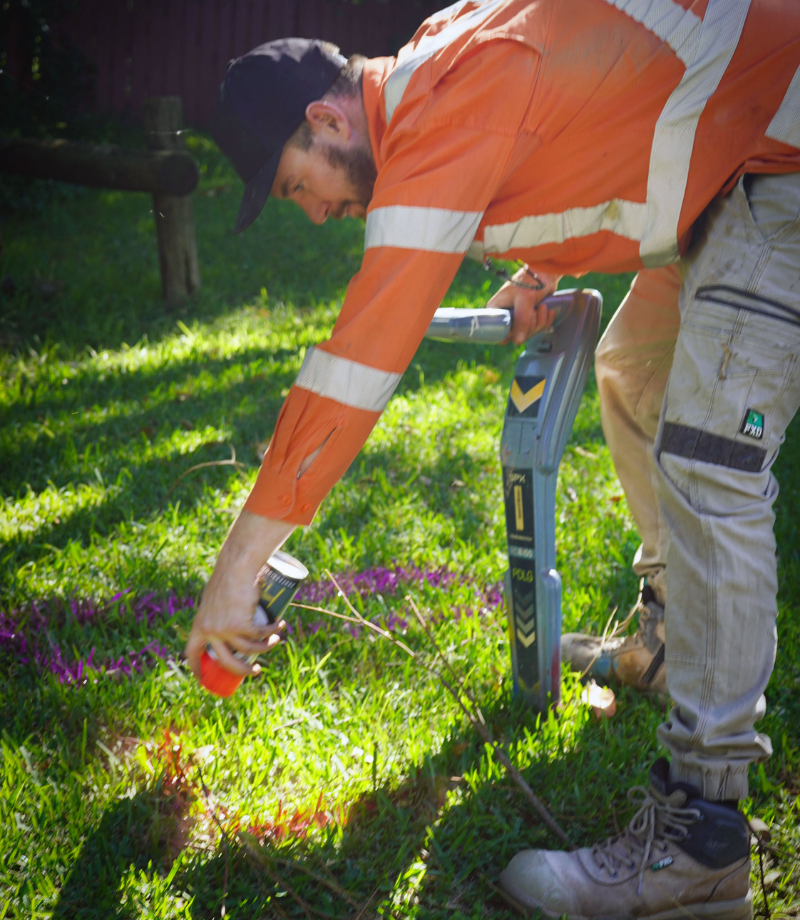In today’s ever-evolving world of urban planning and development, the ability to effectively map and manage underground utilities has never been more critical. With the labyrinth of utility lines that interlace beneath our feet, the process of underground utility locating becomes a crucial aspect of asset, geotechnical, and environmental projects. Let’s delve into the process of underground utility locating and understand why it is so important in these fields.
The Process of Underground Utility Locating
Underground utility locating, at its core, is a process that enables professionals to identify and map the subterranean infrastructure, ensuring minimal disruptions during excavation and construction projects. The process involves a blend of sophisticated technology, expert knowledge, and a meticulous approach. Utilities/Services that can be located include but are not limited to:
- Telecommunications
- Electrical
- Water / Sewer
- Gas
- Stormwater
- Buried Fuel Tanks
- Unmarked Graves
- Pre/Post tension cables/Rebar
- Asset Easements
Firstly, the utility locator must thoroughly assess and review existing documentation and plans. However, these maps often lack complete accuracy due to updates or changes made over time.
The next step is to use specialised equipment that uses electromagnetic, ground penetrating radar, or sonar technology to detect the presence of underground utilities. This equipment sends signals deep into the ground, which bounce back to the surface when they encounter a solid object (hyperbole). The data received helps contribute towards creating a precise map of utilities/structures underground.
The Significance in Asset, Geotechnical, and Environmental Projects
For asset management projects, the precision of underground utility locating is vital. It allows organisations to manage their assets effectively, reducing the risk of accidental utility strikes, which can be costly and potentially dangerous. It also aids in planning maintenance and upgrades, as it provides accurate locations and depth information.
In the context of geotechnical projects, understanding the location of underground utilities is equally crucial. It assists engineers and geologists in making informed decisions, preventing possible interferences with subterranean features and ensuring the structural stability of the project.
When it comes to environmental projects, the ability to locate utilities underground is also significant. For instance, in remediation projects or environmental impact assessments, understanding the location of utilities can prevent potential contamination risks and allows for safe and efficient project execution.
The Risks of Overlooking Underground Utility Locating
Without comprehensive underground utility locating, the risks are high. These can range from budget overruns due to unexpected encounters with utilities, project delays, and even severe accidents causing harm to workers and the public. The necessity to relocate utilities, especially if they’re damaged during excavation, can be a costly and time-consuming affair.
Overall, the process of underground utility locating plays a pivotal role in shaping our cities and protecting our existing infrastructure. It is an invaluable step in modern construction and development projects, ensuring that we can continue to grow and evolve without risking the assets that lie beneath our feet.
In this light, we see that underground utility locating is not just about mapping what’s beneath the surface. It’s about maintaining safety, efficiency, and sustainability in our asset, geotechnical, and environmental projects – ultimately guiding us towards a more informed and responsible future.
If you have a project you require Underground Utility Locating services for, get in touch with us today. The professional team at Smartscan Locators service Sydney wide and are DBYD Certified.

